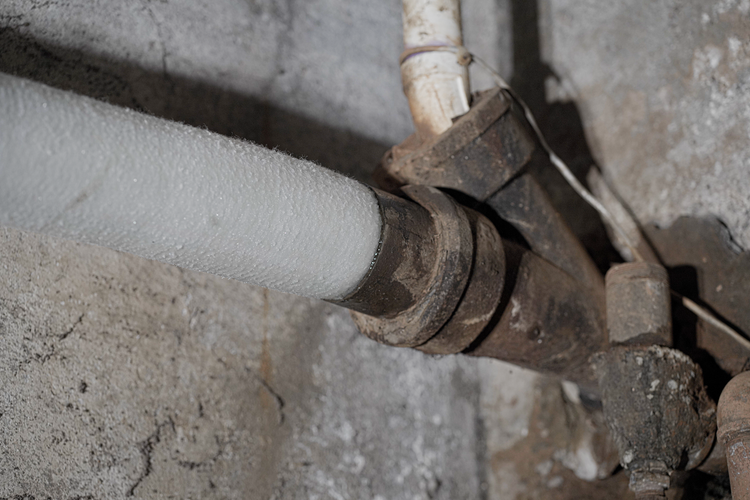
Exploring the Innovative Trenchless Pipe Repair Method
Introduction
Maintaining and repairing underground pipes has long been a challenge for municipalities, businesses, and homeowners. Traditional methods often involved disruptive excavation and replacement, leading to inconvenience, high costs, and environmental concerns. However, advancements in technology have given rise to more efficient and cost-effective solutions, one of which is CIPP (Cured-In-Place Pipe) trenchless pipe repair. In this blog, we'll delve into what CIPP trenchless pipe repair is, its benefits, the process involved, and its impact on various industries.

Understanding CIPP Trenchless Pipe Repair
CIPP trenchless pipe repair is a modern, non-invasive method used to rehabilitate and repair deteriorating or damaged pipes without the need for extensive excavation. This innovative approach involves creating a new pipe within the existing one, effectively eliminating the need to dig up and replace the entire pipeline. The process is ideal for various types of pipes, including sewer lines, stormwater drains, and potable water systems.
Benefits of CIPP Trenchless Pipe Repair
-
Minimal Disruption: One of the primary advantages of CIPP trenchless pipe repair is its minimal disruption to the surrounding environment. Traditional methods often require extensive excavation, leading to road closures, property damage, and disruptions to daily life. With CIPP, the process is carried out underground, minimizing disruption to traffic, pedestrians, and nearby structures.
-
Cost-Effective: Traditional pipe repair methods can be costly due to excavation expenses, labor, and material costs. CIPP trenchless pipe repair offers significant cost savings as it reduces the need for labor-intensive excavation work and restoration of surfaces.
-
Faster Repairs: CIPP technology allows for quicker repair times compared to traditional methods. Since the process is completed underground, there is no need for extensive digging, and repairs can often be completed in a fraction of the time.
-
Environmental Impact: By avoiding large-scale excavation, CIPP trenchless pipe repair helps reduce the environmental impact associated with traditional repair methods. It minimizes soil disturbance, air pollution, and waste generation.
The CIPP Trenchless Pipe Repair Process
The CIPP trenchless pipe repair process involves several key steps:
-
Inspection: A thorough inspection of the damaged pipe is conducted using advanced technologies such as CCTV cameras and robotic tools to assess the extent of the damage.
-
Cleaning: The existing pipe is cleaned using high-pressure water jets, high-speed cleaning machines, or other cleaning methods to remove debris and ensure a smooth surface.
-
Liner Installation: A flexible liner, typically made of resin-saturated felt or fiberglass, is inserted into the damaged pipe. The liner is then pressurized and heated, causing the resin to cure and adhere to the inside of the existing pipe.
-
Curing: The curing process takes a few hours, during which the resin hardens to form a new, structurally sound pipe within the existing one.
-
Inspection and Testing: Once the curing is complete, the repaired pipe is inspected again to ensure the quality of the repair and the integrity of the new lining.
Industries Benefiting from CIPP Trenchless Pipe Repair
CIPP trenchless pipe repair has found applications in various industries:
-
Municipalities: Local governments use CIPP to repair aging sewer and stormwater systems without disrupting city infrastructure.
-
Utilities: Technicians use the CIPP method to repair water distribution pipelines, extending the lifespan of their networks.
-
Industrial Facilities: CIPP can repair pipes within industrial plants, preventing leaks and maintaining operational efficiency.
-
Residential Properties: Homeowners benefit from CIPP for repairing damaged sewer and water lines without damaging their landscapes.
- Commercial Properties: Business owners and operators of businesses ordinarily prefer to minimize the amount of time their business is closed for repairs. The CIPP repair method can greatly reduce this disruption, preserving their operations and profits.
-
Historical Preservation: Buildings that have significant historical value often favor the CIPP process to uphold the historical integrity of the property.
Conclusion
CIPP trenchless pipe repair has revolutionized the way we approach pipe rehabilitation and repair. With its minimal disruption, cost-effectiveness, and environmental benefits, CIPP technology is rapidly gaining popularity across various industries. As technology continues to advance, it is likely that CIPP will become an even more essential tool for ensuring the longevity and functionality of our underground pipelines while minimizing the impact on our communities and environment.
